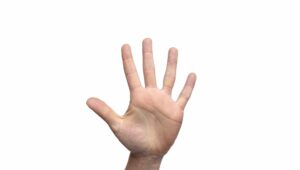Most Important Body Language and Non-Verbal Communication in the Arab World
Beyond words, a nod or a smile can speak volumes, and a handshake can tell a story. Join us as we explore the secret language of gestures in the culturally rich Arab region. Get ready to learn the ABCs – Arab Body Communication – and open doors to a whole new way of interacting!
Using the right hand

In Arabic culture, the right hand is considered the clean and dominant hand, and using it is a sign of respect. Handshakes and gestures with the right hand are common in greetings and social interactions. Using the left hand is generally discouraged, as it is considered unclean in some situations.
Keeping distance between sexes

In Arab societies, there is often an emphasis on maintaining modesty and respecting personal space, especially between unrelated men and women. It is common for individuals of the same gender to interact more closely, while interactions between opposite sexes are often more reserved and observe appropriate physical distance. It is recommended not to offer a handshake to an Arab woman but rather wait until they initiate it.
Placing your right hand on your heart

Placing the right hand on the heart is a sincere gesture of warmth, honesty, and empathy in Arabic non-verbal communication. It is often used to express gratitude, condolences, and other heartfelt emotions. This gesture demonstrates genuine feelings and a deep connection between individuals.
Khamsah (Five)

Placing your palm to somebody’s face (not very close) and moving it forward a couple of times is used in Egyptian culture to ward off the bad eye. It’s used as a joke with friends and family and not recommended to use it with strangers. This sign is called “Khamsa” a word that means five in Arabic referring to the five fingers of the hand.
“ Wait” hand gesture

This gesture looks exactly like the hand sign Italians are known for, the difference is that we move our hand up and down which gives it a totally different meaning. When we do it to someone we are trying to tell them to wait or to be patient.
Tapping your the hand on your head (ala rasi)

This is the way of Arabs to say “thank you” or “you are welcome”. By tapping their hand on the head they acknowledge a favor you have done or telling you that they had the pleasure to help you.
Threaten sign




 Next Post
Next Post



